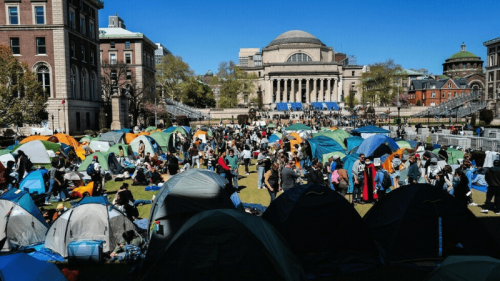“THEIR throats had been cut with metal wire,” said Haji Atta Jan, the head of the Zabul provincial council, of the seven people who were kidnapped and beheaded by the militant factions believed to be loyalists of the self-styled Islamic State (IS) emerging in Afghanistan. Nine-year-old Shukria was among the seven who were beheaded in Afghanistan’s Zabul province. Her ‘crime’? She was born into a Shia Hazara family and was travelling through the ungoverned province on that fateful day.
Why Shukria? Why Hazaras? Why do we come across this word in accounts of atrocities, persecutions, bomb blasts, targeted killings and consequent protest demonstrations, rallies and sit-ins? What is it about the Hazaras that appeals so much to the likes of IS and Afghan Taliban in Afghanistan and to Lashkar-e-Jhangvi and Jaish-ul-Islam in Balochistan?
Hazaras, like most ethnic groups in this region, exist on both sides of the international border. Their numbers are few in Pakistan but they are believed to be the third largest ethnic group in Afghanistan. Although there are a significant number of Ismailis and a few Sunnis among the Hazara, the vast majority are Shia. This political identity, coupled with their distinctive facial and linguistic similarity to Turk Mongols, makes them targets of first choice for competing factions of extremist Sunni militants. Hazaras do not pose a threat to IS or the Taliban but with their Shia and Hazara identity, their killing is something a militant Sunni faction can capitalise on in a Sunni-majority society.
Hazaras are targets of first choice for competing factions of extremists.
Terrorists are opportunists who violently challenge the status quo’s rise to power and seek to influence public opinion in their favour. Vulnerable social groups who cannot resist aggressively and are identifiable as the alien, the different, and the other — based on identities of ethnicity, language, colour or faith — are seen by opportunist terrorist groups as the softest targets. Competing extremist groups find themselves in a race to convince their followers that it is they who can be more brutal and violent to ‘the other’. By sheer demonstration of extreme brutality against weaker minority groups, they want to champion the cause of the majority. This is why 5,000 minority Yezidis were killed in Iraq’s Sinjar mountains, and this is why nine-year-old Shukria was cut from ear to ear with a metal wire on Nov 10, 2015.
Seeking to secure a foothold in Afghanistan, Taliban dissidents under the aegis of IS were quick to claim the Zabul massacre but the Taliban, a relatively established militant group in Afghanistan, also capitalised on the situation — albeit in a way contrary to that of IS. Dramatically enough, as per media reports on Nov 12, the Taliban claimed to have executed the IS militants involved in the beheading of Hazara Muslims.
The evolution in the Taliban’s stance is strategic and opportunistic. The same Taliban in March 1995, then an emerging militant force, brutally tortured and killed the Hazara leader Abdul Ali Mazari along with 14 executive members of Hizb-i-Wahdat. Although otherwise strongly opposed to photography for religious reasons, the Taliban widely distributed the graphic images of the mutilated bodies claiming that was how they would treat ‘heretics’. For the then little-known Taliban and Mullah Omar, Mazari’s horrific death offered an opportunity to introduce themselves to Afghanistan’s Sunni constituencies and to the world.
The day after the Zabul massacre when the bodies of the victims arrived in Kabul, thousands of people took to the streets in what many observers termed Afghanistan’s biggest protest rally in 40 years. Crowds of Hazara men and women were joined by Pakhtuns and Tajiks, Hindus and Sikhs. According to one analyst, the only consolation in this tragedy
is the Pakhtun-Hazara-Tajik unity that emerged. Another, he said, was the sight of tens of thousands of Afghan youth rising above ethnic and sectarian considerations to defend human rights and condemn the ‘emotionless’ statements not only from the Pakhtun Ashraf Ghani but his Hazara apologist Haji Mohaqiq.
In societies where vulnerable minority groups can do little more than mourn and where governments are as nonexistent as in Zabul, the majority social groups carry an extra burden of responsibility, for it is they whom the terrorists are talking to. They can stand up and speak in solidarity with their victimised brethren. They can defy the extremists who seek to exploit their identity. During the Second World War, the Danish Christian community conspired to foil Nazi plans to segregate Denmark’s Jewish community. This November, it is not people inside the Arg, the Afghan presidential palace, but the ‘humans of Kabul’ who have defied the Taliban and IS alike.
At a time when the government is ineffective and the future uncertain, the solidarity displayed by the Afghan youth is the best hope for Afghanistan, a country that has had more than its share of suffering.
The writer is a student of Peace and Conflict Studies.
Twitter:@Changovski
Published in Dawn, November 15th, 2015












































